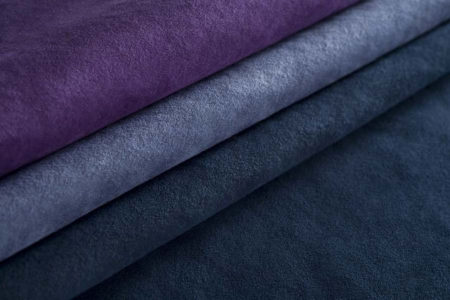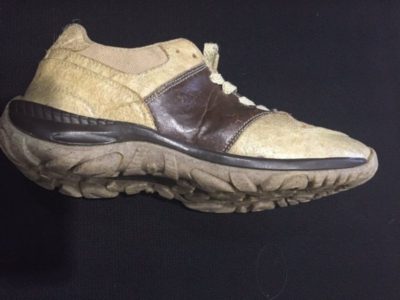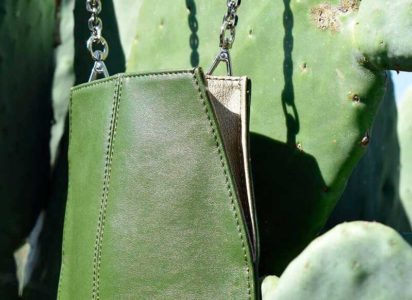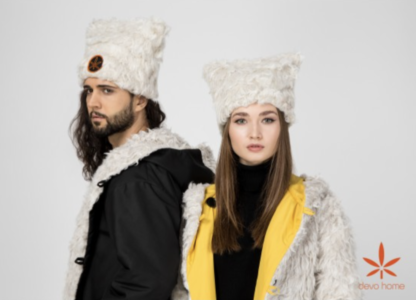It is no secret that the production of leather and fur is a cruel and harmful process. But these materials have become so ingrained in our lives for so long and deeply that it seemed impossible to get along without them.
Leather is used in various industries, from clothing, footwear, and accessories to books, furniture, and even wallpaper. Not only fur coats are sewn from fur, but also hats, mittens, shoes, and even toys and bags. The skin is perceived by society as a by-product of the meat and dairy industry (although there are separate farms for the production of premium leather), then the fur is always a separate industry, where animals are raised only for their skins. Substances and chemical compounds used in the treatment of hides (sulfuric acid, chromium, ammonium sulfate, surfactants, and degreasers) together leave a significant environmental footprint and harm the health of workers and people living near farms.
So how to deal with it? How to bypass bloody markets? Is it possible to do or at least reduce the number of such things in your life?
The answers below are written by Yana Bilous, representative of the “Fur-free retail” campaign from the NGO “Open Cages.”
***
While giants such as Adidas sign fur disclaimers in their collections, Fur-Free Retail campaign activists are looking for answers to these questions and presenting a selection of innovative alternatives that can replace seemingly indispensable materials such as leather and fur.

Stronger and more beautiful than suede – Alcantara
As far back as the 1970s, Japanese scientist Miyoshi Okamoto, who worked for the Torah chemical company, developed a material now called alcantara that looked like suede. Alcantara is actually a synthetic textile made of ultramicrofiber. Currently, this material belongs to the Italian company Alcantara, which specializes in this fabric. Alcantara is widespread and available in our reality. It has found its place in tailoring, shoemaking, jewelry, furniture, widespread in decorating luxury items such as yachts, boats, helicopters, interiors of expensive hotels, restaurants, casinos. Alcantara is also used in race car showrooms. On the seat and steering wheel, it provides better traction than leather. This material is much more durable than suede, it is easy to clean, and it is pleasant to the touch, has a shorter pile, is more elastic than the skin, holds its shape better, has no odor, and is breathable. Alcantara is environmentally friendly, hypoallergenic, and resistant to many chemicals. It is an excellent substitute for suede, a technical textile that is better than natural fabric in many respects.
Eco-skins Fiquetex

To reduce the suffering of animals and preserve the environment in the world, many interesting, sometimes unexpected, solutions are invented. One of these is the vegan skin Fiquetex. Fique is a fiber found in plants of the species Furcraea. The brand’s co-founder, Gabriel Moreno, saw a study in which scientists predicted that by 2050, the oceans would contain more plastic bags than fish. This prompted him to create such an alternative. Fiquetex vegan skin solves the problem of using a large area of land used in animal husbandry and reduces air pollution, as it does not require keeping cows.
“We are creating jobs in rural Colombia where Fique is grown. In this way, farmers gain the skills and resources needed for sustainable production,” said Gabriel.
The inventor also believes that Fiquetex creates a great alternative to illegal crops and drug production. According to the manufacturer, Fique fiber uses 10% less energy than plastic leather, so-called “leather,” including polyurethane and vinyl. Traders predict a rapid increase in vegan skin production by 2025.
“Green skin” from… cacti

Adrian Lopez Velarde and Marty Casares from Mexico offered their ecological replacement for the skin; its “green” basis was a cactus. Friends worked in leather, Marty in fashion, and Adrian in the furniture and automotive industries. They considered how strongly the production of classic leather affects the environment, and this became the motive for creating an innovative project – Desserto. The men spent two years working on creating and developing the material, and in July 2019, they finally got the result. In Mexico, cacti are pretty common and go unattended because they do not require much water and are resistant to low temperatures. The second argument in favor of the choice of material was the fact that the outer layer of these heat-loving plants to the touch like genuine leather, which after proper treatment can change its texture and properties. Plantations from the cacti are perennial; the mature leaves are cut, washed, chopped, and dried in the sun. The obtained material does not contain any toxic chemicals; patented technology is used for processing.
Another massive advantage of cactus skin is that it is a 100% natural biodegradable material. It is flexible and breathable, will last more than ten years. When you decide to get rid of a product made from this eco-leather – just fill it with water and leave for a few weeks. It will literally melt and turn into natural compost that can be used as fertilizer.
Fleather – a material created from flowers
In India, an innovative startup Phool was launched to create vegan skin from flowers left in temples. The biomaterials company was founded by Ankita Agarwal, an automation engineer, and Pratek Kumar, in July 2017 and immediately offered to take 8 tons of flower waste, which was dumped into the Ganges every day. Waste that cannot be recycled, such as plastic or thread, is separated, leaving only flowers. Then they are sorted by species – roses, jasmine, calendula flowers, and others. After sorting, the petals are separated by hand, which are used to make “leather.” A material called Fleather is grown on a substrate of wilted plants. The factory prepares a unique extract – “nutritious substrate based on flowers.” The process of growth of “skin” over this substrate takes about three weeks. The skin is of good quality, quite elastic and strong. It can be used for any products.
In 2019, Fleather received the UN Award for Sustainable Development and attracted the attention of the fashion industry. The company already has agreements with three Italian luxury brands. They all develop international lines. In 2020, PETA in India also presented Kanpur Flowercycling with the award for the best innovation in the world of fashion. In addition to proving that leather can be made without harming animals and the environment, Kanpur Flowercycling also provides jobs for local women.
In addition to leather and fragrances, startup Phool has also learned to make an alternative to polyfoam from flowers – Florafoam. They have already raised $ 1.4 million to develop their flower processing projects. The company now processes 7,600 kg of flower waste and 97 kg of toxic chemicals daily.
Clothes and furniture made of mushrooms

Another exciting alternative is mushroom skin. Many startups put forward the idea; there was even tea mushroom skin. However, things made from it are sensitive to temperatures and water. Back in 2016, artist Phil Ross, the founder of Mycoworks, and his team became famous for growing “mushroom skin” from mycelium. Manipulating the indicators of humidity and temperature, and then subjecting the material to tanning, various structures of “skin” appear. Finally, we have a material that does not decompose as fast as classic leather. This is because the material contains chitin in its structure, which makes it so strong. Another feature of this skin is that when grown, it can be added various elements (zippers, fasteners, buttons, hooks), which eventually grow and can be inserted without glue and thread. In addition, furniture made of mycelium was presented at Mycoworks exhibitions.
“The technology of making furniture is quite simple and similar to how architects work on a project. First, we invent and design a form, which will then fill a living organism. With the help of fruit remnants, which are always followed by a mushroom, we control which way it grows, and when its shape is close to ideal, all that remains is to dry it, polish it and bake it to use again. We came to this decision after 15 years of research and experimentation, “says Phil at an architectural forum in Cairo.
However, this is not the only team that makes vegan mushroom skin. The New York Times called the “main trend of the fall” an environmentally friendly mushroom-based leather substitute: several major fashion brands began working with Bolt Threads, which produces Mylo, a leather-like material made from mushroom mycelium.
Fake fur
At the same time, modern technical and technological possibilities allow making high-quality materials, fabrics, and fibers to imitate natural fur successfully. Collections are often presented at fashion shows, where faux fur is used with great variety. It consists of two textures that resemble the structure of natural fur. It has a base in the form of a cloth, usually made of natural threads with the addition of synthetics for strength, and pile, i.e., thin fibers in appearance resembling the structure of fur. In fact, these fibers are obtained chemically and are also part of the combined types of threads and yarns: nitron (polyacrylonitrile fiber), mylar (polyester), and kapron (polyamide fiber).
Today, faux fur is widely used in the manufacture of clothing, for insulation of outerwear, for collars or cuffs, for the manufacture of insoles, finishing the inner and outer surface of shoes, children’s toys and furniture. Unlike natural fur products, its analogs are pretty light, heat-conducting, and wear-resistant materials. And their price is much lower, and all the minks are intact.
Hemp coats

A Ukrainian designer offers an alternative to both real and synthetic faux fur. Oksana Devo created winter coats and hats made of hemp fur for her company Devohome. The fabric is a bit like the wool of freshly sheared sheep and, however, bears little resemblance to the fur collar of parks. However, hemp fur is an excellent alternative to fashionable coats made of a flock and faux fur.
Vegan, hypoallergenic and biodegradable hemp fiber has long been a widely used natural fiber in Europe. Hemp is good for the soil; the plant has a positive effect on subsequently grown crops and is universal.
“Hemp is a fast-growing material that is strong and stable,” says Oksana Devo.
Until the 19th century, hemp was one of the most important raw materials for textiles, clothing, ropes, nets, and canvases in Europe. But over the last century, hemp has been replaced by cotton or synthetic fibers in almost every part of the world. Hemp wool, which the designer has developed through numerous experiments, consists of 50% hemp and 50% viscose – alternatives to faux fur without chemicals. This material has many advantages: hemp is extremely strong and thus contributes to the durability of things. And the fiber is perfect for insulation, which makes it an ideal material for winter clothes.
Fur is not needed when the jacket is smart: intelligent clothes technology
The development of research activities allows you to create materials that are superior to natural in some special properties. The Columbia brand is an excellent example of this. The company has many technologies that it introduces in the production of clothing and footwear. For example, the Omhi-heat heat insulation method is used with synthetic insulation that retains heat and minimizes heat loss. In addition, this insulation is 50% recycled, helping to preserve the environment.
Thermarator is another technology that allows you to retain heat even when the fabric is wet. It also mimics the appearance of down due to its elasticity and dense synthetic insulation, without burdening the weight of the product.
There are other technologies of a similar type that retain heat through thermoregulation. The special line of the Omhi-heat 3D brand is created from products with silver reflectors with the expanded coverage and capsules from soft fibers making an air gateway between a body and fabric, perfectly keeping heat and providing comfort.
The basis for the creation of all smart clothes is a fabric that has innovative properties and special characteristics of the materials. The fabric with silver nanoparticles can be used as a bactericidal and antimicrobial agent; in addition, the surface layer of silver applied by printing can act as flexible chips. Palladium nanoparticles, for example, neutralize harmful components of smog, and clothing with carbon nanoparticles can even save lives from explosions and electromagnetic radiation.
The future lies in innovation!
All these innovative ideas and their bold implementation prove once again that the time for change has come! During the development of technology, it is no longer necessary to exploit animals for survival, because we no longer need their skin and fur. And the issue of environmental protection is still highly relevant and, thanks to such bold projects, it can be solved. It is important to remember that consumer support is vital, because it is your daily choice that matters!
Let’s look together into the future and get to know about technologies and substances that will shape our everyday life in a few years – read this article.



